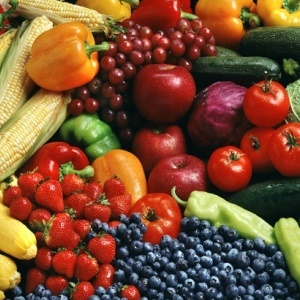
What are phytonutrients?
Often we read words without understanding what they mean. The term “phytonutrient” is one such example. Phytonutrients or phytochemicals are thousands of natural bioactive compounds found in a variety of plant foods. “Phyto" has its origin in the Greek word for plant. These bioactive compounds give colour to foods and protect plants from harmful bacteria.
What do they do?
In the human diet, these phytonutrients play a role in optimising immune function to reduce the risk of infection. These bioactive compounds can be anti-microbial, anti-inflammatory and even anti-ageing. Research has even shown that certain phytonutrients play a role in improving blood lipid levels, which can reduce risk for heart disease. Lowering other risk factors which affect chronic disease, such as blood pressure, has also been associated with diets that have higher intakes of phytonutrients.
Read: Micronutrients boost immunity
Where do we find them?
Fruits and vegetables as well as other plant-based foods such as whole grains, nuts, beans and certain teas contain these bioactive powercompounds. Unlike vitamins and minerals, phytonutrients aren't considered essential for health. They optimise and promote good health but biological reactions still function without them. There is however minimised protection against disease without a variety of phytonutrients present in the diet. More than 25,000 phytonutrients have been identified, but let’s look at four of the better known phytonutients and their benefits:
1. Carotenoids
The most common carotenoids are beta-carotene, lycopene and lutein found in purple, white, red, green and orange plant foods. These compounds affect cell signalling and messaging, and as such have been shown to reduce the risk of cardiovascular diseases and certain cancers. Lutein specifically has a role in optimal eye health as well as preventing uterine, prostate, breast, and lung cancers.
Read: Potential dark side to diets high in Beta-carotene
2. Ellagic acid
The highest levels of ellagic acid are found in blackberries, cranberries, pecans, pomegranates, raspberries, strawberries, walnuts and grapes. Ellagic acid has been shown to significantly inhibit cell processes that result in multiplication and movement of cancer cells. As such, this powerful plant compound has been linked to cancer prevention, particularly cancers of the prostate and breast.
3. Flavonoids
Flavonoids are phenolic compounds found in berries, legumes, tea, grapes, olive oil, cocoa, walnuts, peanuts, spices, fruits, green vegetables and onions. Flavonoids form a very diverse group of compounds with more than 5,000 different bioactive nutrients being identified in this group alone. Among the biological activities, flavonoids act against damaging free radicals that destroy cells and interfere with optimal cell growth and healing.
Read: Flavonoids – powerful antioxidants
4. Resveratrol
Resveratrol is a natural compound made by plants in stress conditions and under attack from harmful bacteria. It is found in high concentrations in the skin of purple grapes, strawberries, blueberries, mulberries, peanuts and red wine. It is a neuroprotective compound that contributes to improved brain health. It has beneficial effects on the cardiovascular system due to its anti-oxidant properties that preserve the functioning of cells in the arteries.
In a nutshell
The phytonutrient food group packs a powerful punch when it comes to improving health and protecting us against illness and chronic disease. These compounds are like little soldiers patrolling and protecting the blood vessels and cells that make up the vital organs of the body. These super soldiers defend against disease and damage and ensure optimal cell growth, repair and health.
To enjoy the benefits of this army, eat a wide variety of plant based food sources in their most natural state at a minimum of five portions per day. Focus specifically on filling your plate with the colours of the rainbow to gain every benefit phytonutrients have to offer.
Read more:
Antioxidants: top foods identified
Mediterranean diet keeps seniors' minds healthier
US adults don't eat enough fruit and vegetables
References
1. Duyff, R. American Dietetic Association Complete Food and Nutrition Guide, Wiley, 2012.
2. Neng Wang, Zhi-Yu Wang, Sui-Lin Mo, et al. (2012) Ellagic acid, a phenolic compound, exerts anti-angiogenesis effects via VEGFR-2 signalling pathway in breast cancer. Breast Cancer Res Treat. 2012 August; 134(3): 943–955.
3. Gupta C and Prakash D (2014) Phytonutrients as therapeutic agents. J Complement Integr Med. 2014; 11(3): 151–169.




 Publications
Publications
 Partners
Partners














